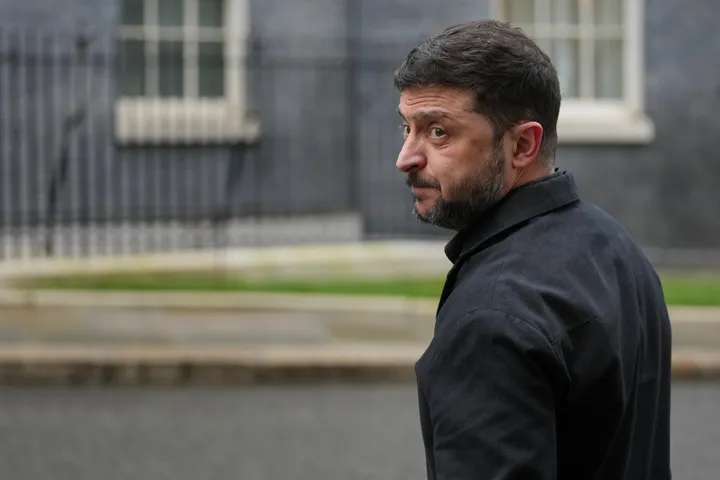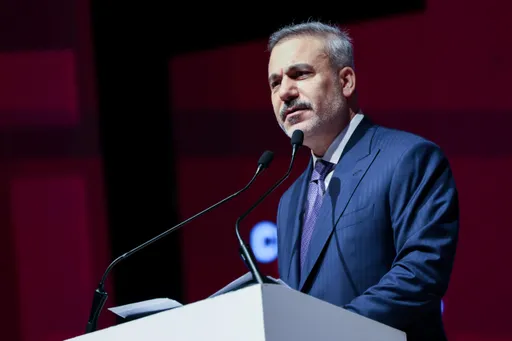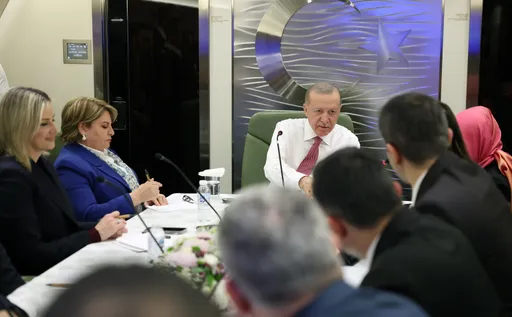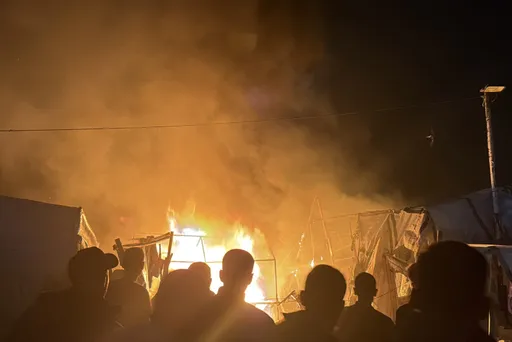On March 11, a little after two weeks from the start of Russia’s assault on Ukraine, Russian President Vladimir Putin announced that Moscow was ready to accept 16,000 “volunteers” from the Middle East to fight in Ukraine alongside Russian forces.
With this statement, ongoing media rumours about Russia’s recruitment of Syrian fighters from areas under the control of Bashar al Assad’s regime were publicly confirmed. Other sources also reported that Russia had allegedly withdrawn Syrian mercenaries from Libya to fight in Ukraine.
Whether these are signs that the Russian army is faltering or merely regrouping for their next assault is debatable. Nevertheless, these steps have shown the world that Moscow views all of its military operations—from Ukraine to Syria, Libya, and Nagorno-Karabakh—as an interconnected network of expansion, rather than as separate stages where it flexes its muscles.
The Russian naval supply line from the Black Sea to Syria and from Syria to Libya symbolises this interconnectivity. Although, as the Montreux Agreement foresees the closure of the Dardanelles and Bosphorus Straits in times of war, Russia has lost its ability to supply its activities in Syria via the Black and Mediterranean Seas.
This link between Russia’s various interventions is also visible in its military actions in different countries.
When the situation in Libya escalated, Russia intensified attacks in Syria as a trump card for its goals in the North African country. After the Azerbaijani army made significant progress in Nagorno-Karabakh, the Russian military stepped up its bombardment in Syria and struck a symbolic target, seen as a warning to Ankara, which was backing Baku.
Moreover, after Poland purchased Türkiye-made Bayraktar TB2 drones in May 2021, the Kremlin decided to escalate attacks in Syria once again. These deliberate increases in hostilities in different conflict arenas are not mere coincidences.
When it comes to what strategy should be adopted against Russia in Ukraine, the Western alliance can be more successful if it, too, considers a global and integrated approach to counter Moscow militarily.
Western countries are supporting Ukraine by giving it weapons and penalising Russia with economic sanctions. Though these actions reflect international coordination, they are not part of any long-drawn strategy aimed at countering Russia.
And while the invocation of the Montreux Convention would hinder Russia’s role in Syria from a logistics perspective—Moscow will be able to maintain its presence in Syria and Libya in the absence of international coordination and a strategy.
Keeping in mind that Russia used Syria to respond to events in other conflicts, integrating Syria into the western Ukraine strategy would be a first step that could help restore the international order.
The way forward
The conflict in Ukraine presents a unique opportunity for the international community. So far, Russia has mostly refrained from using air strikes in Syria as leverage in Ukraine. It appears that the Kremlin prefers sending Syrian mercenaries to Ukraine rather than intensifying its attacks in the eastern Mediterranean country; Russia seems unable to keep up conflicts on two fronts.
A marked slowdown of Russian air strikes in Syria since the beginning of the assault on Ukraine also supports this, as it may be the lowest intensity of Russian attacks since its intervention in the Syrian war in 2015. In the past three weeks, Russia conducted “only” two air strikes.
Increased financial and military support to the Syrian Interim Government, which represents the opposition, accompanied by strengthening relations with it, would be the first step. In line with this thinking, the Syrian National Coalition and the Syrian Interim Government requested the same weapons as the ones provided to Ukraine from the international community.
Moreover, NATO allies need to bridge their differences and focus on realpolitik. The combination of military, economic, and political support to the Syrian Interim Government alongside coordination between NATO allies in Syria may be the key to success.
In other words, the international community would be working to bog down Russia in Syria. This, along with international pressure on the Russian economy, could weaken Moscow’s position in Syria. In this case, the entire balance of power in Syria could change.
This is because Russian direct military aid to the Assad regime is essential for its survival. Without it, the Syrian opposition forces will have the upper hand.
If Russia emerges victorious from Ukraine, the world should be ready for a new round of Russian escalation in Syria and elsewhere. Due to economic sanctions, diplomatic pressure, and internal protests, Russia has already become isolated. Putin may feel that there is no additional cost of forcing a military solution in Syria or other countries.
It’s likely that Russia may attack Idlib and the areas under the control of the Syrian Interim Government, currently protected by Ankara, and force more than four million Syrians to surrender or flee towards Türkiye. Most of these desperate refugees will become an ultimate tool—and revenge—for Putin, as they will inevitably head to Europe. The Western alliance can prevent this humanitarian catastrophe, and more, by countering Russia in the place where it all started.
























